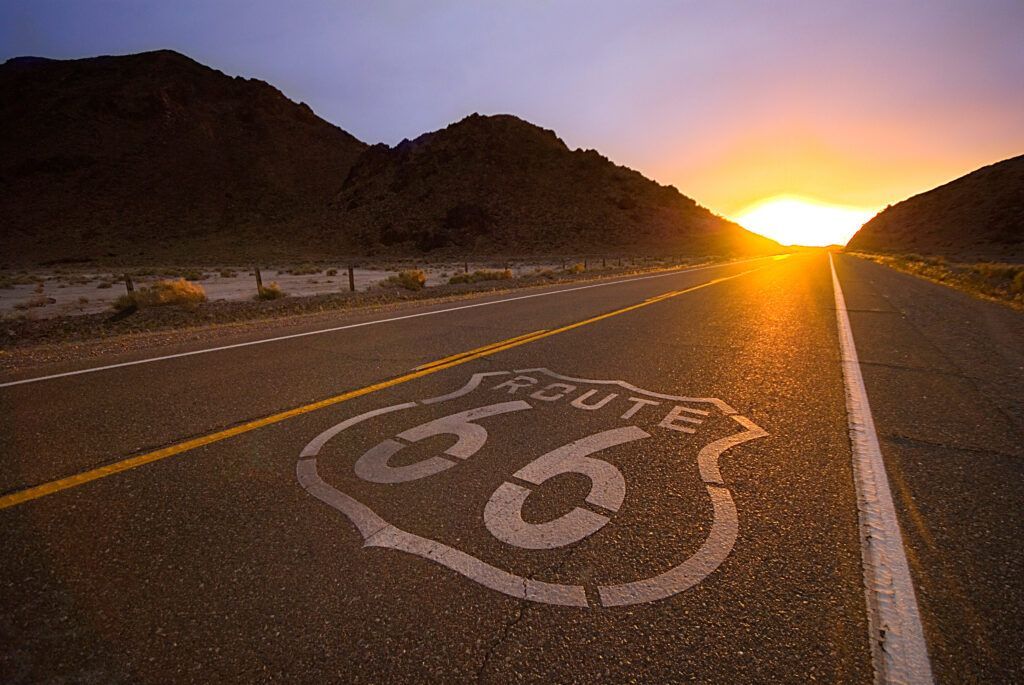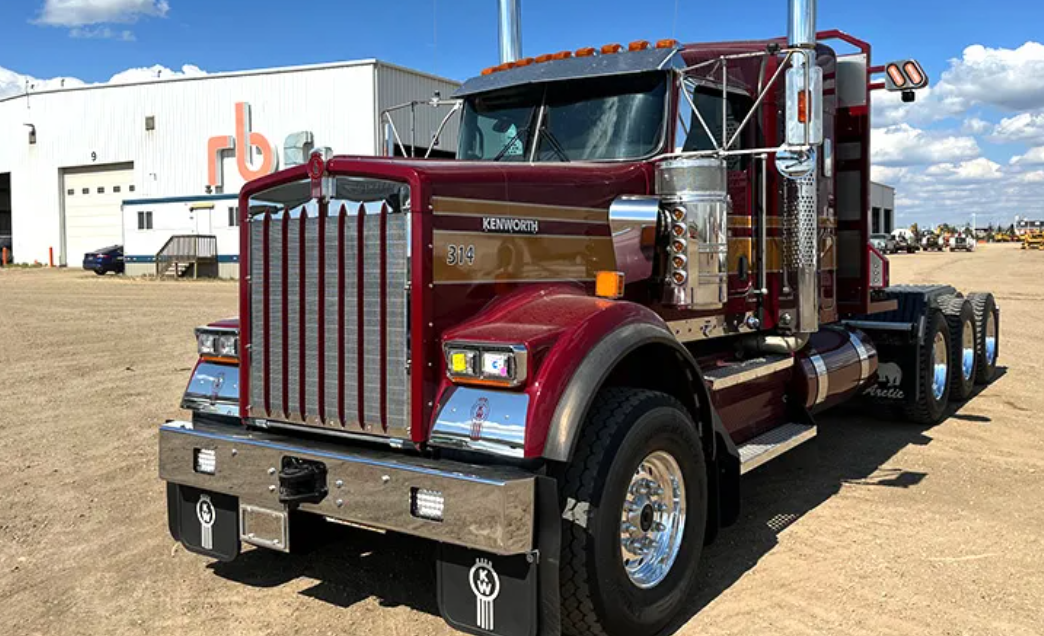WRITTEN BY: BLOOM SERVICES

Route 66, also known as the “Mother Road,” was one of the original highways in the United States Highway System. It was established on November 11, 1926, and originally ran from Chicago, Illinois to Santa Monica, California, covering a total distance of 2,448 miles. The highway passed through several states, including Missouri, Kansas, Oklahoma, Texas, New Mexico, Arizona, and California, and connected numerous small towns and cities along the way.
Route 66 was an important artery for the transportation of goods and people, and it played a crucial role in the economic development and growth of communities The road became particularly popular in the post-World War II era, as it provided a route for families and travelers to migrate westward in search of new opportunities. In the 1950s and 1960s, Route 66 became iconic as a symbol of the American spirit and the open road, and it was celebrated in popular culture through songs, books, and TV shows. In 1985, the highway was officially decommissioned and replaced by a series of newer, faster interstates, but it remains beloved, nostalgic member of American history.
Origin of Route 66
The Origin of Route 66 started before cars were even invented. In 1857 almost 30 years before the automobile lieutenant Edward Fitzgerald Beale (1822-1893) was ordered to build a government funded wagon road along 35th Parallel. This became a big chunk of the future Route 66. Around 1890’s through the mid 1920’s when the automobiles were still very new and before the highway system there were auto trails. Auto trails were marked by private auto organizations simply to help travelers to get around. Anyone was able to set up a trail. In 1916 congress passed the legislation for highways but a more comprehensive act was passed in 1925. John T. Woodruff lobbied for a route from Chicago to Los Angeles following the 1925 highway plans. On April 30th 1926 the new highway Route from Chicago to LA was given a designation of “66”.
OFficial Beginning In 1926
Luckily there were a lot of auto trails that could be used but they had to be upgraded which means they had to be paved. Route 66 would use portions of three auto trails: auto trail from Cameron, LA to Chicago, IL, Ozark trail system and transcontinental old trails road from St Louis to Louisiana. It was built to connect urban and rural areas along the route and make it easier to transport goods and people. In 1927, US Highway 66 Association was established with John T. Woodruff as President. He played an important role in popularizing Route 66. In 1928 US Highway 66 Association started to spread the word about the new highway. In order to get people on the road they started a foot race from Los Angeles to New York that is a 3423 miles race. And it was a success! 155 people started it but 55 people finished it and it took 84 days to complete the race. Runners were covering about 40 miles every day. In 1932 US Highway Association ran its first ad inviting people to use Route 66 while going to see the Olympics in Los Angeles. And it worked!
Route 66 Truck Route
In 1930’s it became a preferred truck route because most of it was flat. Due to the dust ball many families migrated west to find work and Route 66 took them from places like Oklahoma, Arkansas, Texas. Because of all of that additional traffic many small businesses opened up to help to serve these travelers. Businesses like gas stations, restaurants, motels were popping up all along the way.
As a result, trucking companies and independent truckers made frequent use of the road to transport a variety of goods and materials. In the early days of Route 66, truck traffic was relatively light, as the road was mostly used by small businesses and individual travelers. However, as the economy boomed following World War II and the road became more popular, truck traffic increased significantly. Truckers used Route 66 to transport a variety of goods, including agricultural products, manufactured goods, and consumer products, from one end of the country to the other. The road also played a vital role in the military’s logistics operations, with military trucks using the road to transport supplies and equipment. Today, while Route 66 is no longer a designated highway, many trucking companies and independent truckers still use parts of the road as a convenient and efficient route for transporting goods across the country.
Route 66 Completion and Replacement
In 1936 Route 66 finally was extended to Santa Monica and only in 1938 Route 66 was completely paved. In 1939 World War II started, the highway divided just to accommodate military vehicles. Later in 1940’s Route 66 was upgraded to a divided highway. The 1950’s showed the growth of vacationers. Being flat and easy to navigate made the highway very popular. Route 66 is the highway which started the whole concept of road trip in America. When in 1950’s they started to build bypasses this was the beginning of the end. By the late 60’s most rural stretches of the highway in New Mexico were replaced by I-40. Slowly but surely I-40 and other interstates were replacing Route 66 making access to local business more difficult while making traveling easier.
Interesting Places on Route 66 for Truckers
For truckers traveling along Route 66, there were many interesting and memorable places to visit and explore. One such place was the Wigwam Motel in Holbrook, Arizona, which featured unique “tepee” shaped guest rooms. The Blue Swallow Motel in Tucumcari, New Mexico was another popular stop for truckers, with its vintage neon sign and cozy, retro-style rooms. The Route 66 Diner in Albuquerque, New Mexico was a favorite among truckers and travelers alike, offering classic American comfort food and a retro 1950s atmosphere.
In addition to these roadside attractions, truckers could also take time to visit the numerous museums, galleries, and cultural sites along the route, such as the National Cowboy & Western Heritage Museum in Oklahoma City and the Painted Desert and Petrified Forest National Park in Arizona. Overall, Route 66 was a rich and varied landscape that offered something for everyone, and truckers could enjoy a wide range of interesting and unique experiences while driving along the legendary highway.
Bloom Services, INc
Here at Bloom, we provide Freightliner Cascadias on our Rental and Lease-Purchase Program. They come equipped with powerful inverters, fridges, and a HVAC system that doesn’t require the truck to idle. The Freightliner is one of the most fuel efficient trucks on the road. If you have a Class A CDL and want to long-haul, Bloom Services is hiring OTR truckers. Our drivers take home $3,000 + a week after all expenses. Apply Now.
.



office & Parking depot
5120 Belmont Rd Unit K, Downers Grove, IL 60515, USA
Hours of operation
Mon - Sun: 7am-5pm
